On View
What Makes Fashion Campy? See the Wild, Strange Looks That Define the Style in Met’s New Costume Institute Exhibition
The show focuses on an idea and sensibility that are almost impossible to define.
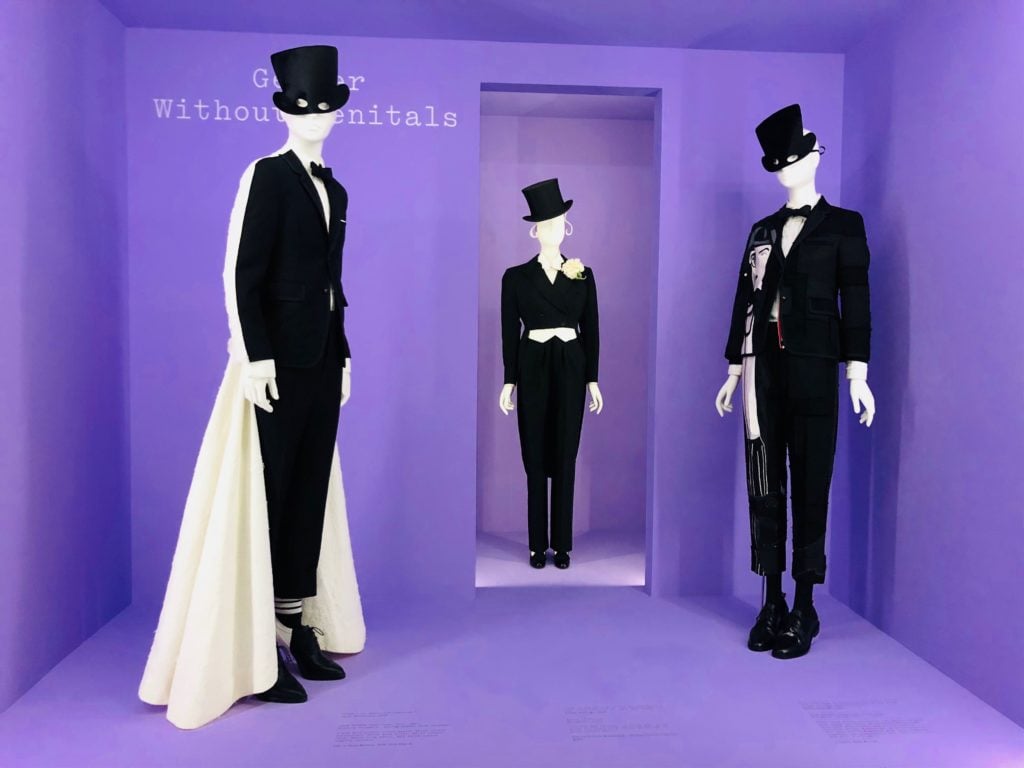
The show focuses on an idea and sensibility that are almost impossible to define.

Caroline Goldstein

The Metropolitan Museum of Art’s latest Costume Institute exhibition is organized around an idea that’s difficult to define: camp. Indeed, as the museum’s director, Max Hollein, noted in his remarks at the opening preview, the word itself is manifested in every possible part of speech. It’s a noun, a verb, an adjective—and even a sensibility.
Camp may seem fun, whimsical, humorous, but as camp authority Fabio Cleto explains in his catalogue essay, “camp does not make make fun of things grave, momentous, and solemn; it makes fun out of them, cherishing them as it transcends their solemnity into irony.” He goes on to detail all of the problems with defining camp: “it combines contrapositions, not so much to reconcile them, but to collapse their opposition… Camp contradicts itself.”
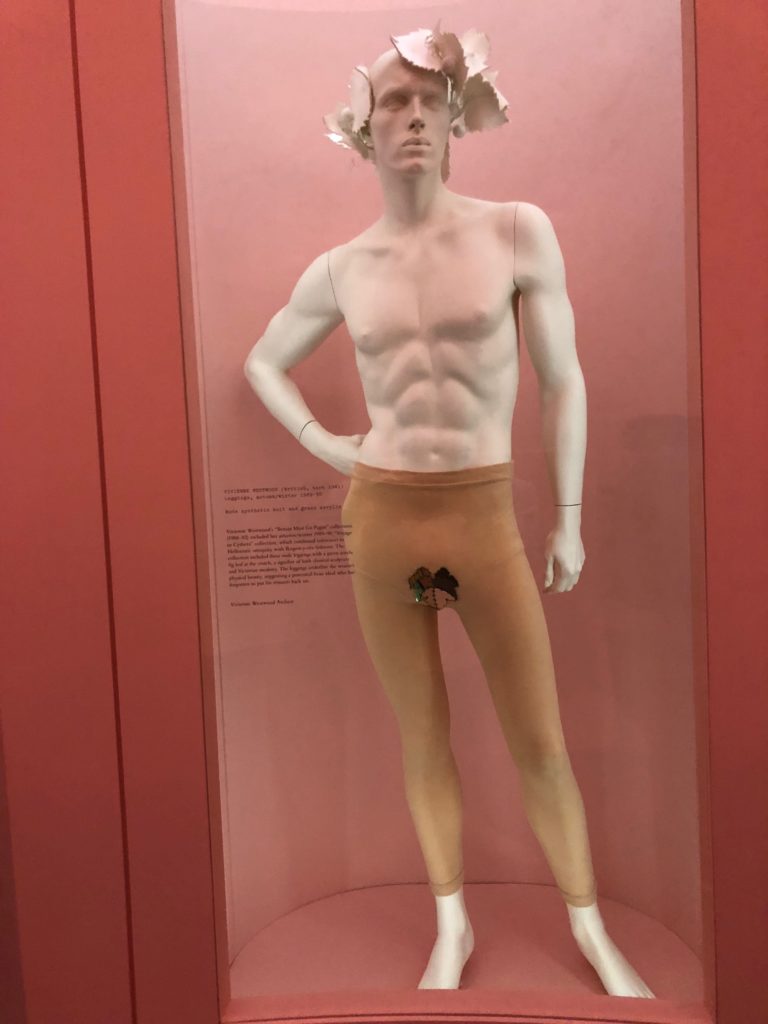
Installation view of “Notes on Camp: The Beau Ideal.” Photo: Caroline Goldstein.
There are distinct sections throughout the salmon-pink-painted walls in the exhibition, purposefully designed to feel narrow to the point of claustrophobic, recalling the feelings many must have felt when enacting their camp sensibilities in an underground club or bar, before they were welcomed into the mainstream.
In the first sections of the show, we are introduced to camp as “The Beau Ideal,” which juxtaposes works by Robert Mapplethorpe with other examples of male beauty like the Antinous Admirandus, a sculpture that epitomizes the classical male figure—and which has became a symbol of homoeroticism with its S-curved figure, hip-cocked to the side with a faraway gaze.
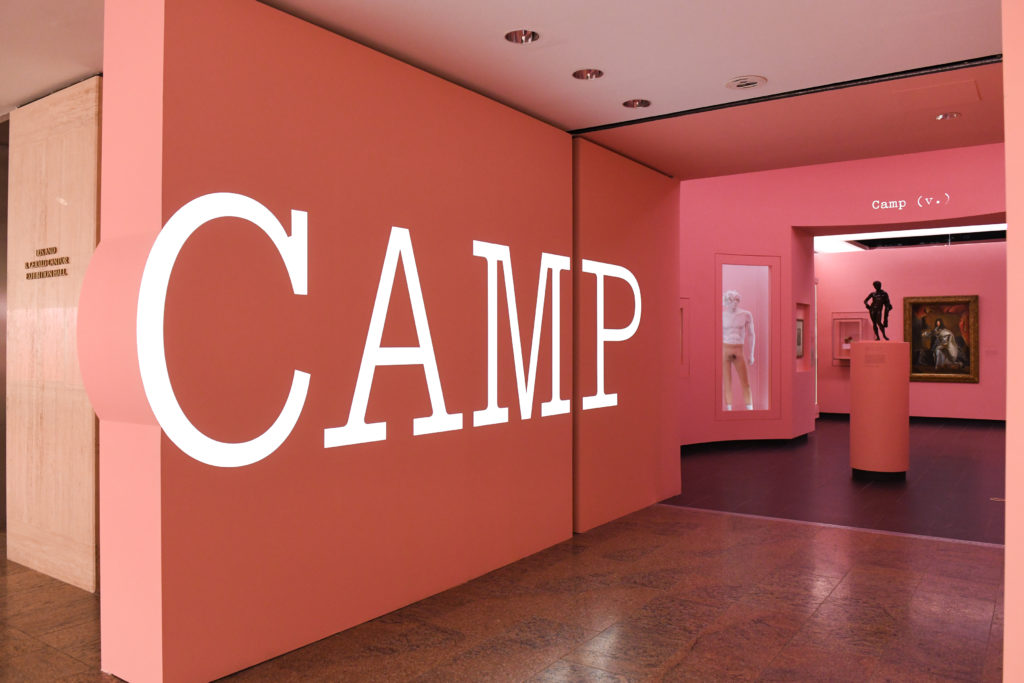
Gallery view, Image courtesy of the Metropolitan Museum of Art, BFA.com/Zach Hilty.
Other sections of the show feature examples of “Isherwoodian Camp” and “Sontagian Camp,” as expressed in their distinct writings on the subject. Isherwood’s definition is notable for discerning “high camp” from “low camp,” meaning, among other things, ballet and Baroque art in the former, and “a swishy little boy with peroxided hair… pretending to be Marlene Dietrich” in the latter. (Sontag, of course, is the one who brought camp out into the open with her essay Notes on Camp, which was used as source material for the show.)
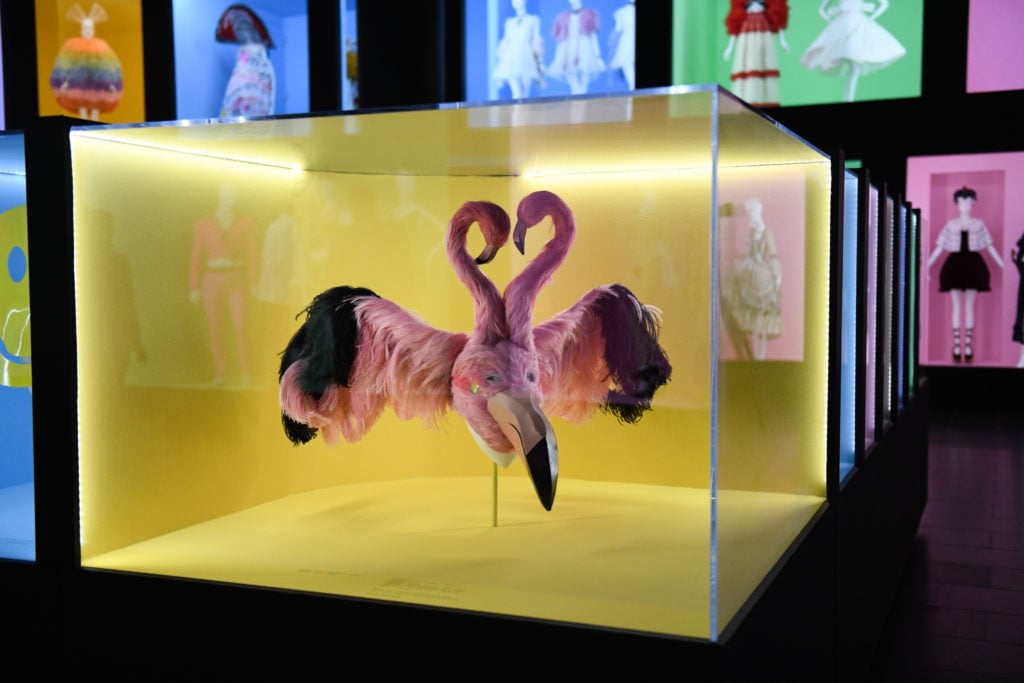
Gallery view, Accessories Case, Image courtesy of the Metropolitan Museum of Art, BFA.com/Zach Hilty.
The second part of the exhibition is the more successful one, stuffing as many colors, textures, and fashion designers into a dramatically lit black-box room as possible, with ensembles illuminated by fluorescent colors in distinct vitrines, each costumes with own story of camp.
At the press preview for the show, the esteemed chief curator of the Costume Institute, Andrew Bolton, closed his remarks with the words of one historian who wrote: “camp is like trying to sit in the corner of a circular room”—something that would be near impossible, especially with a feathered headdress, hoopskirts, and sky-high platform shoes.
See more images from the show below. “Camp: Notes on Fashion” is on view at the Met from May 8–September 8, 2019.
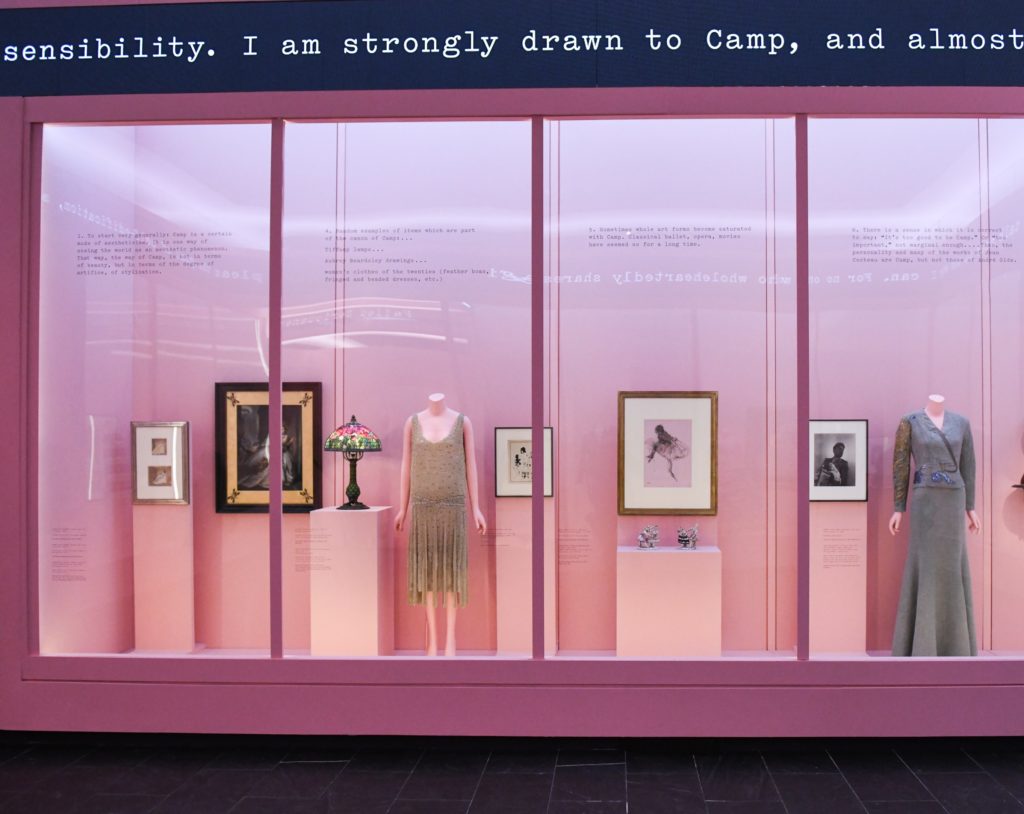
Gallery view, “Sontagian Camp” Image courtesy of the Metropolitan Museum of Art, BFA.com/Zach Hilty.
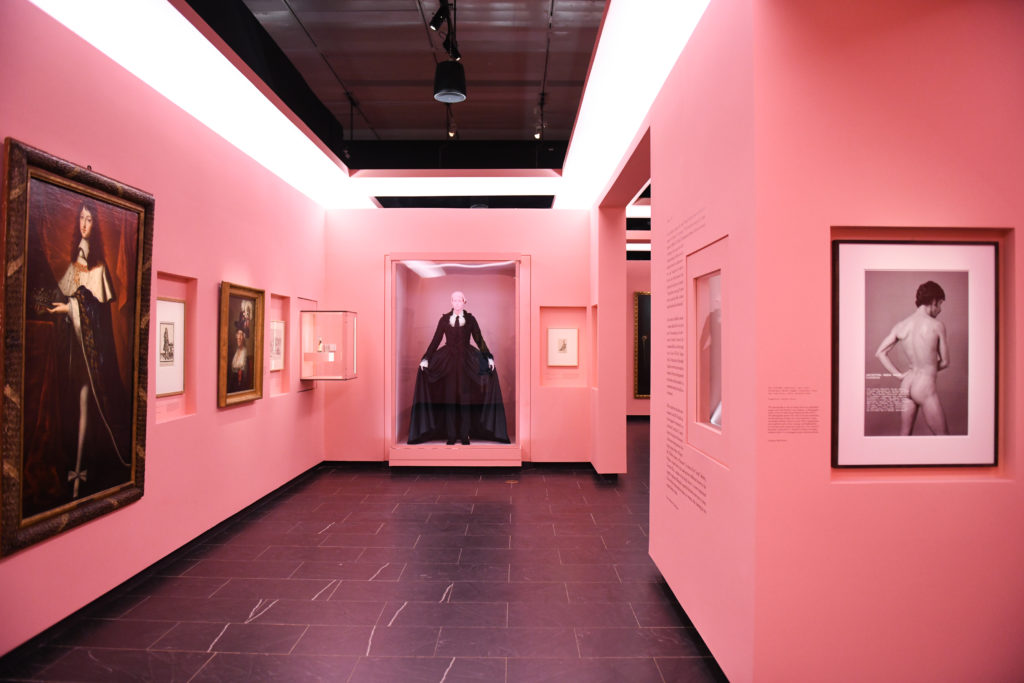
Gallery view, “Camp (v.)” Image courtesy of the Metropolitan Museum of Art, BFA.com/Zach Hilty.
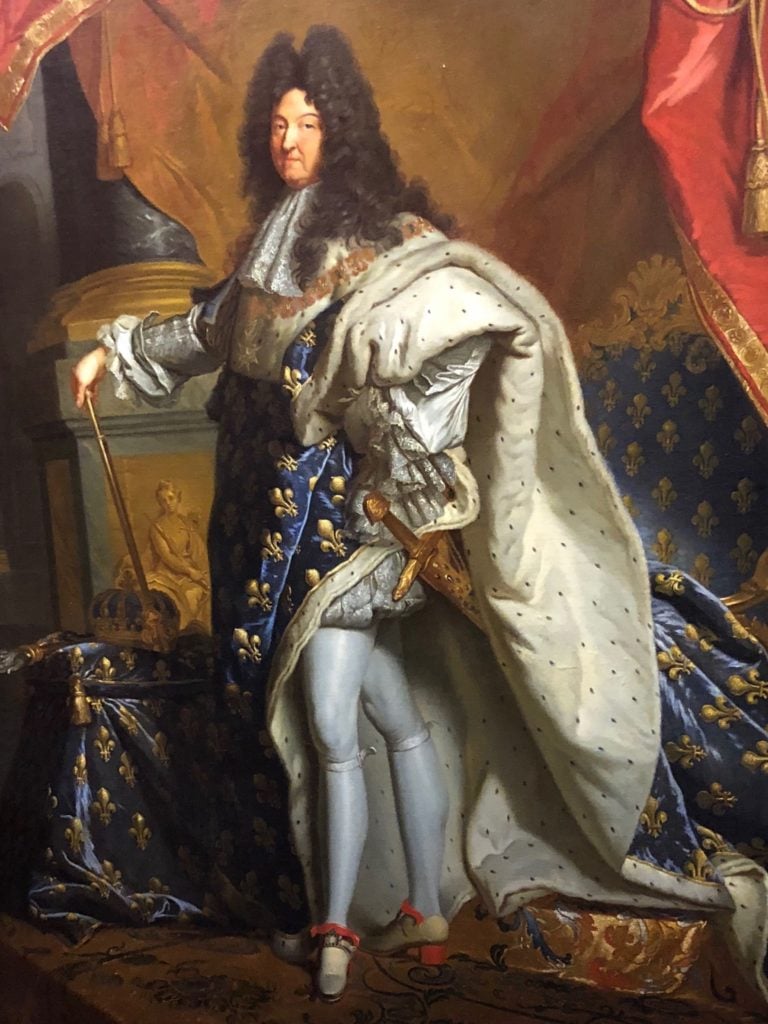
Hyacinthe Rigaud, Portrait of Louis XIV (1701). Courtesy of Musée du Louvre. Photo: Caroline Goldstein.
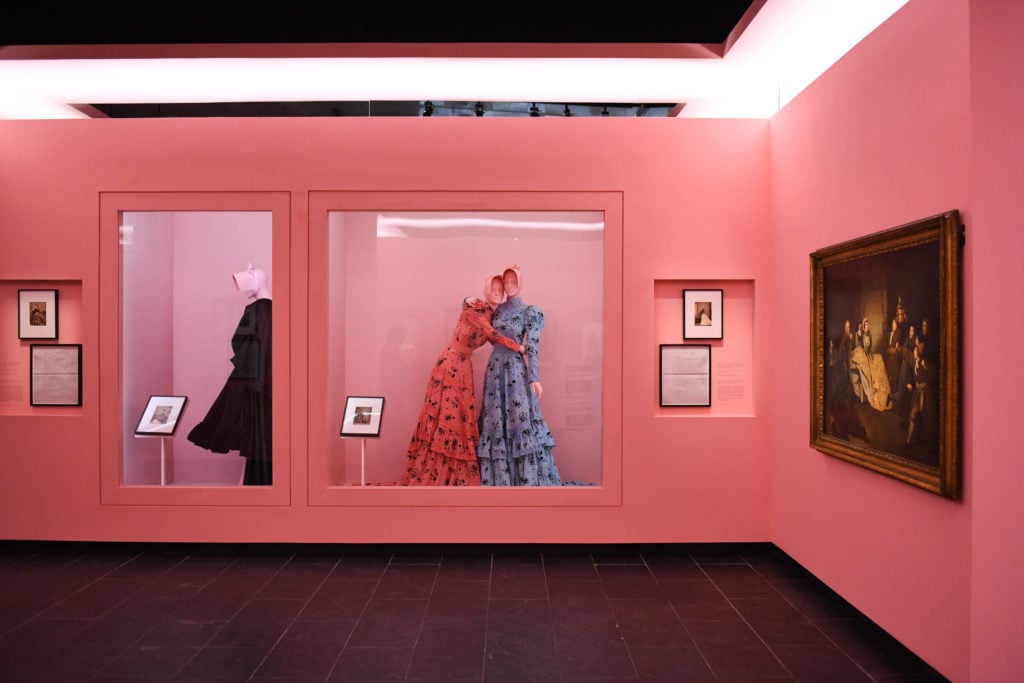
Gallery view, “Camp (adj.)” Image courtesy of the Metropolitan Museum of Art, BFA.com/Zach Hilty.
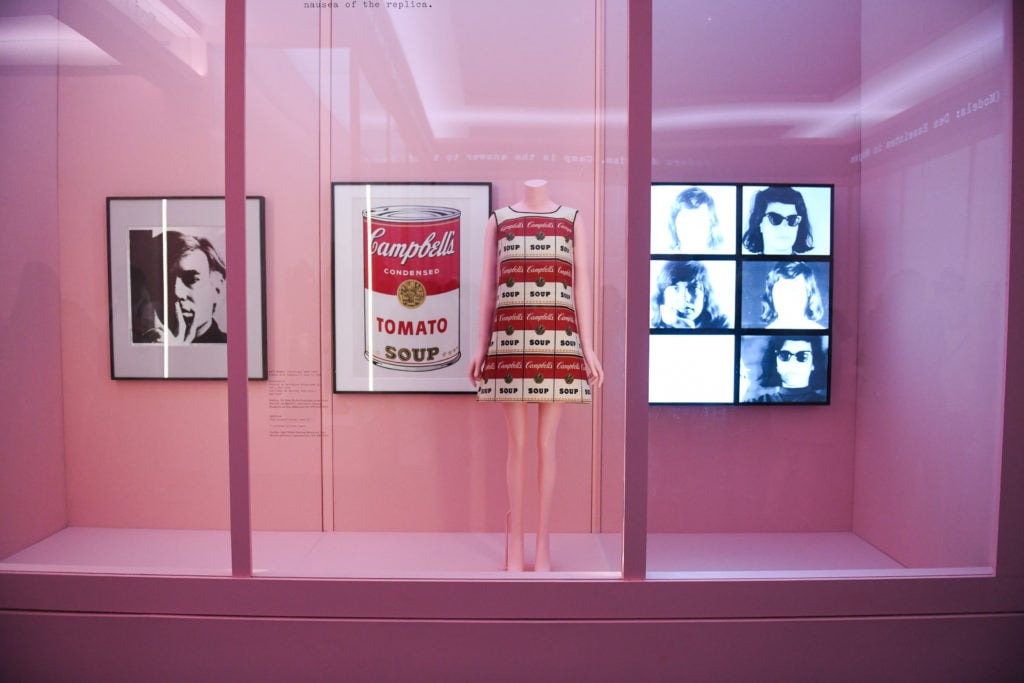
Gallery view, “Sontagian Camp” Image courtesy of the Metropolitan Museum of Art, BFA.com/Zach Hilty.
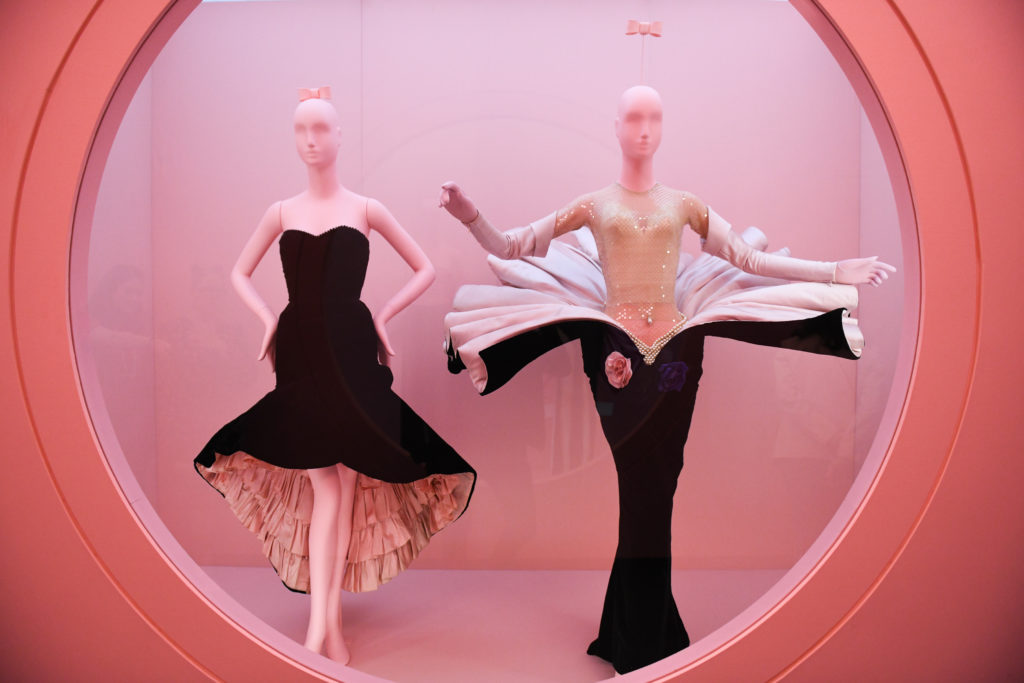
Gallery view, “Failed Seriousness” Image courtesy of the Metropolitan Museum of Art, BFA.com/Zach Hilty.
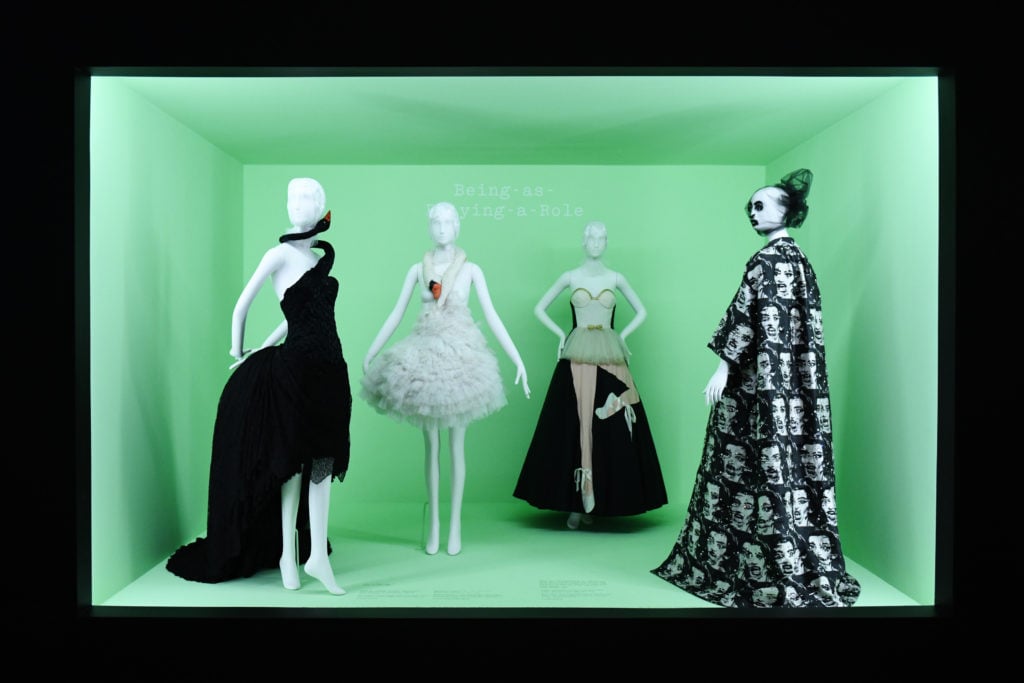
A gallery view of “Camp: Notes on Fashion” at the Costume Institute at the Met. Image courtesy of the Metropolitan Museum of Art, BFA.com/Zach Hilty.
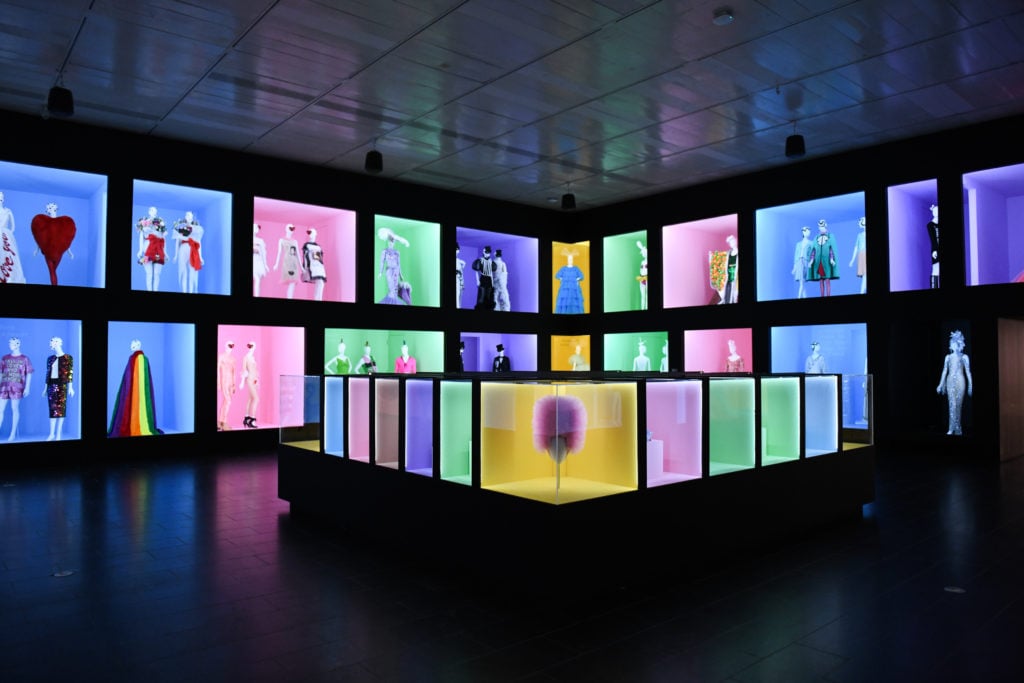
Gallery view Part 2, Image courtesy of The Metropolitan Museum of Art. Photo: BFA.com/Zach Hilty.
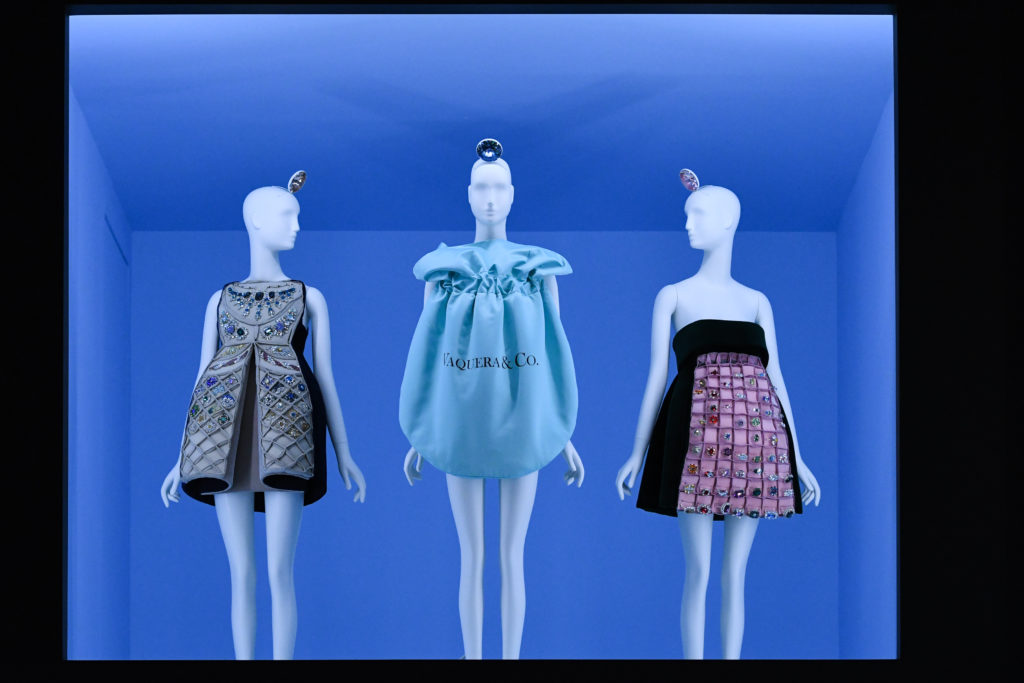
Gallery view, “The Psychopathy of Affluence” Image courtesy of the Metropolitan Museum of Art, BFA.com/Zach Hilty.

Gallery view, “Outrageous Aestheticism” Image courtesy of the Metropolitan Museum of Art, BFA.com/Zach Hilty.
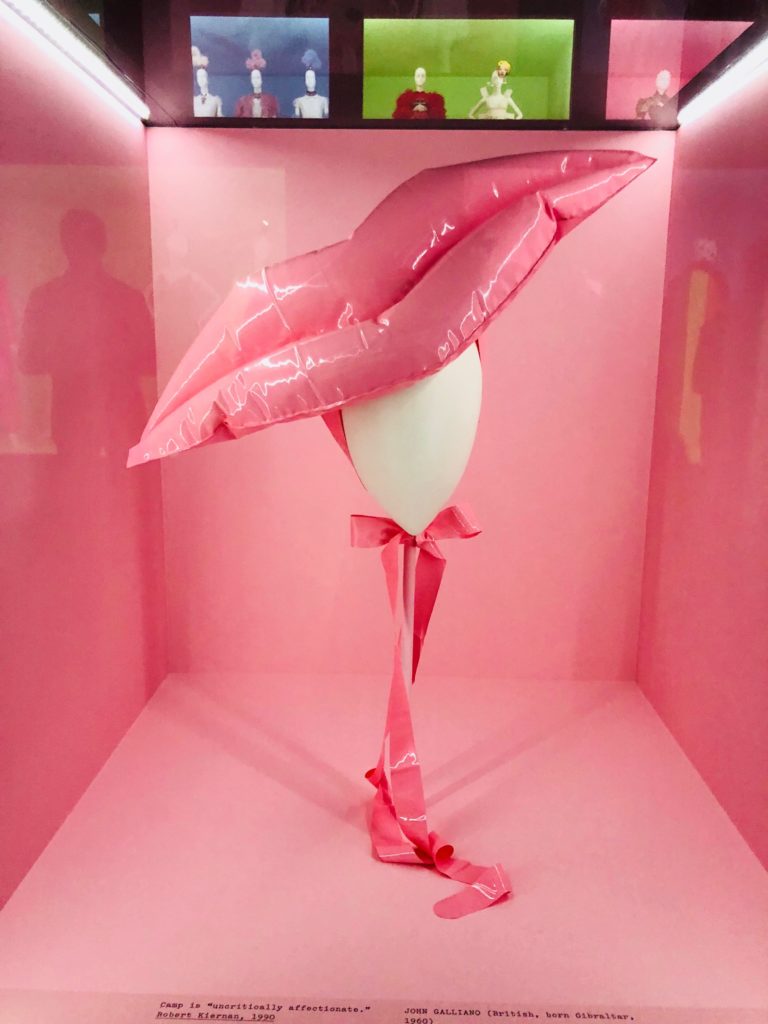
Installation view, “Camp: Notes on Fashion” at the Met. Photo: Caroline Goldstein.

Installation view, “Camp: Notes on Fashion” at the Met. Photo: Caroline Goldstein.
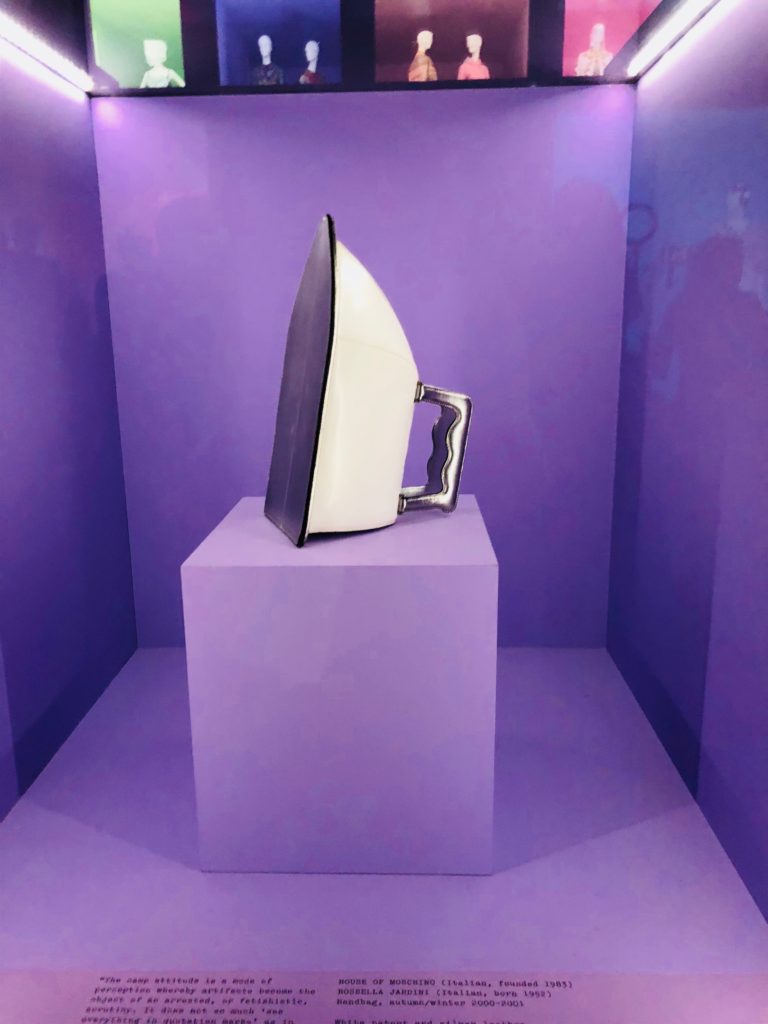
Installation view, “Camp: Notes on Fashion” at the Met. Photo: Caroline Goldstein.
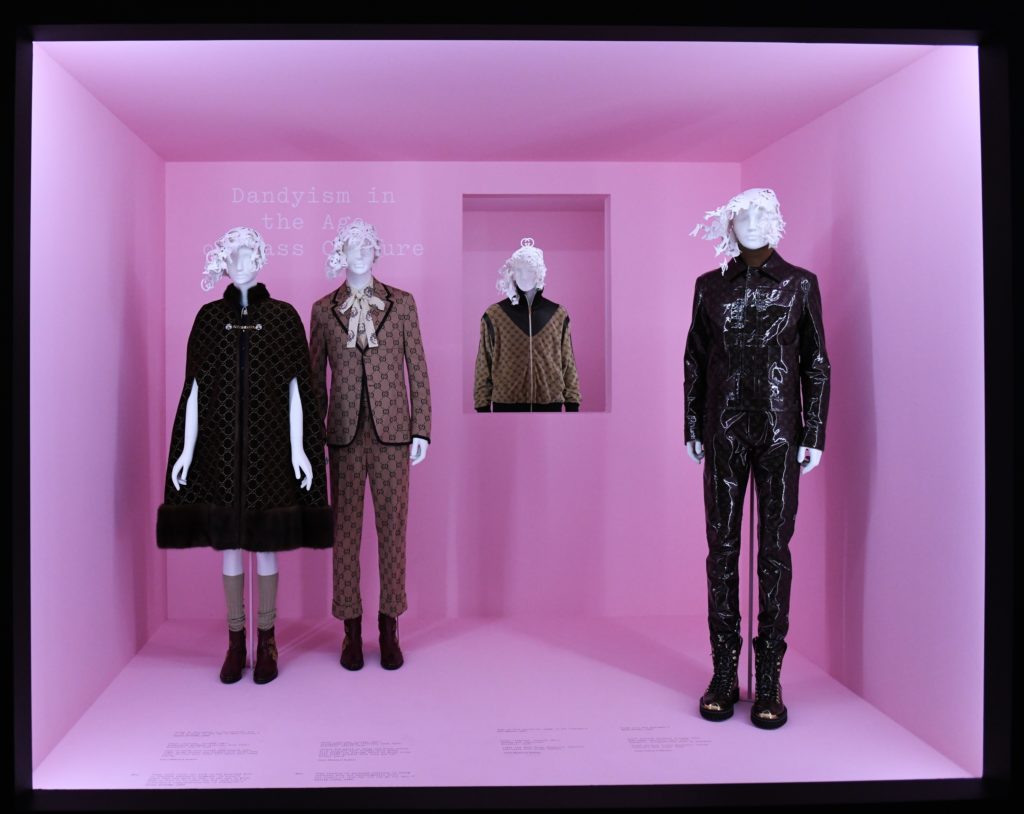
Gallery view, “Dandyism in the Age of Mass Culture” Image courtesy of the Metropolitan Museum of Art, BFA.com/Zach Hilty.